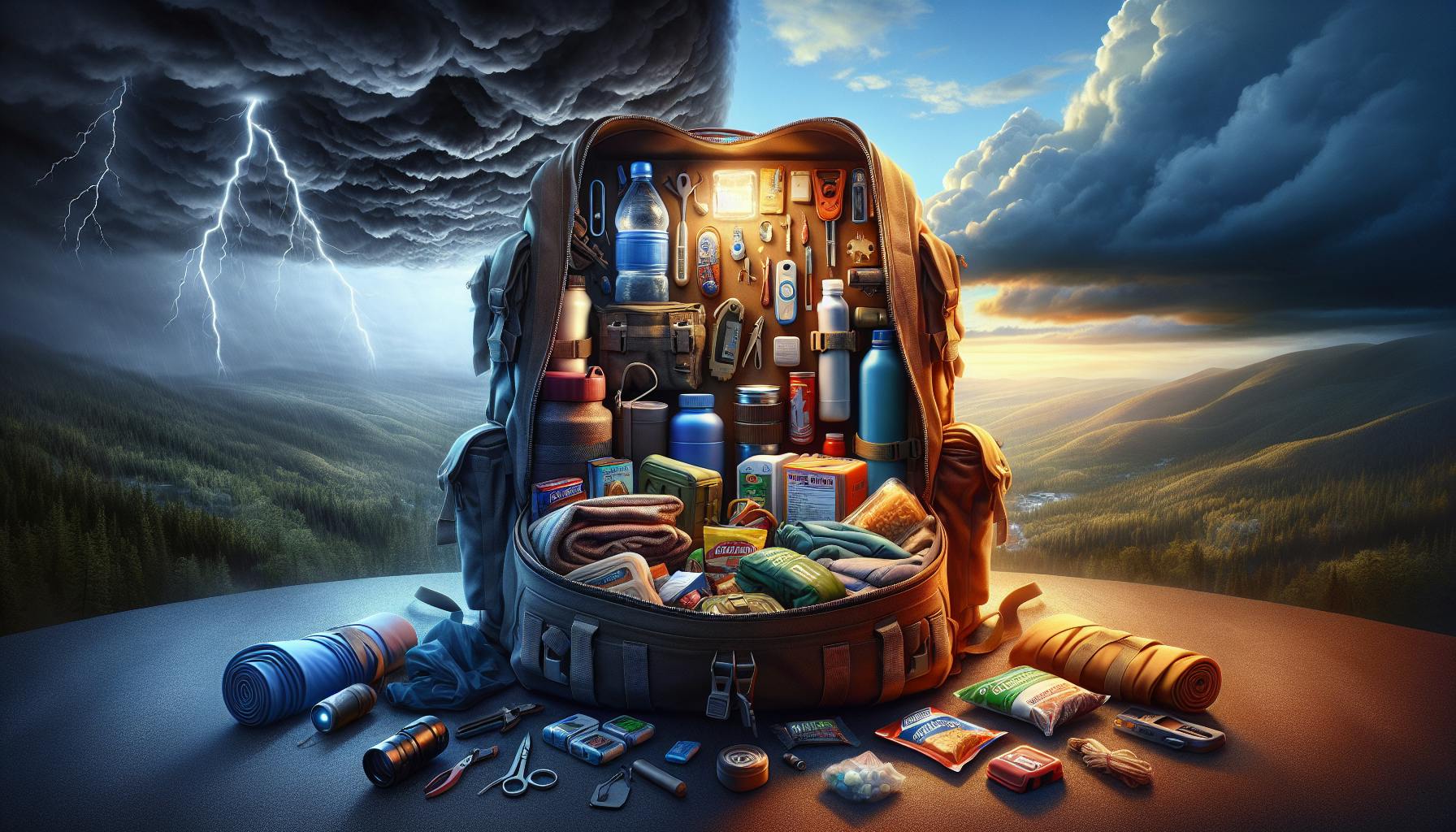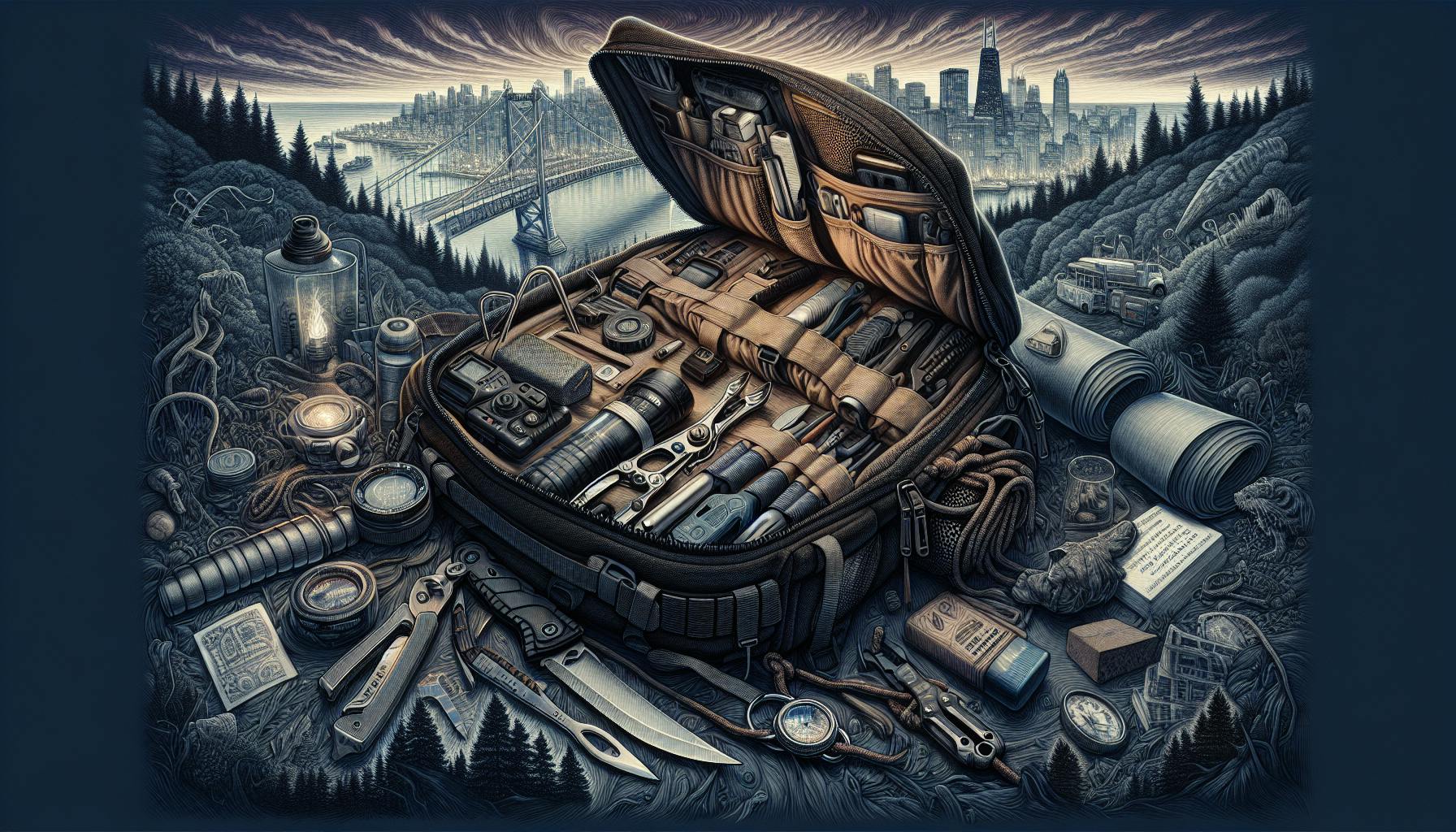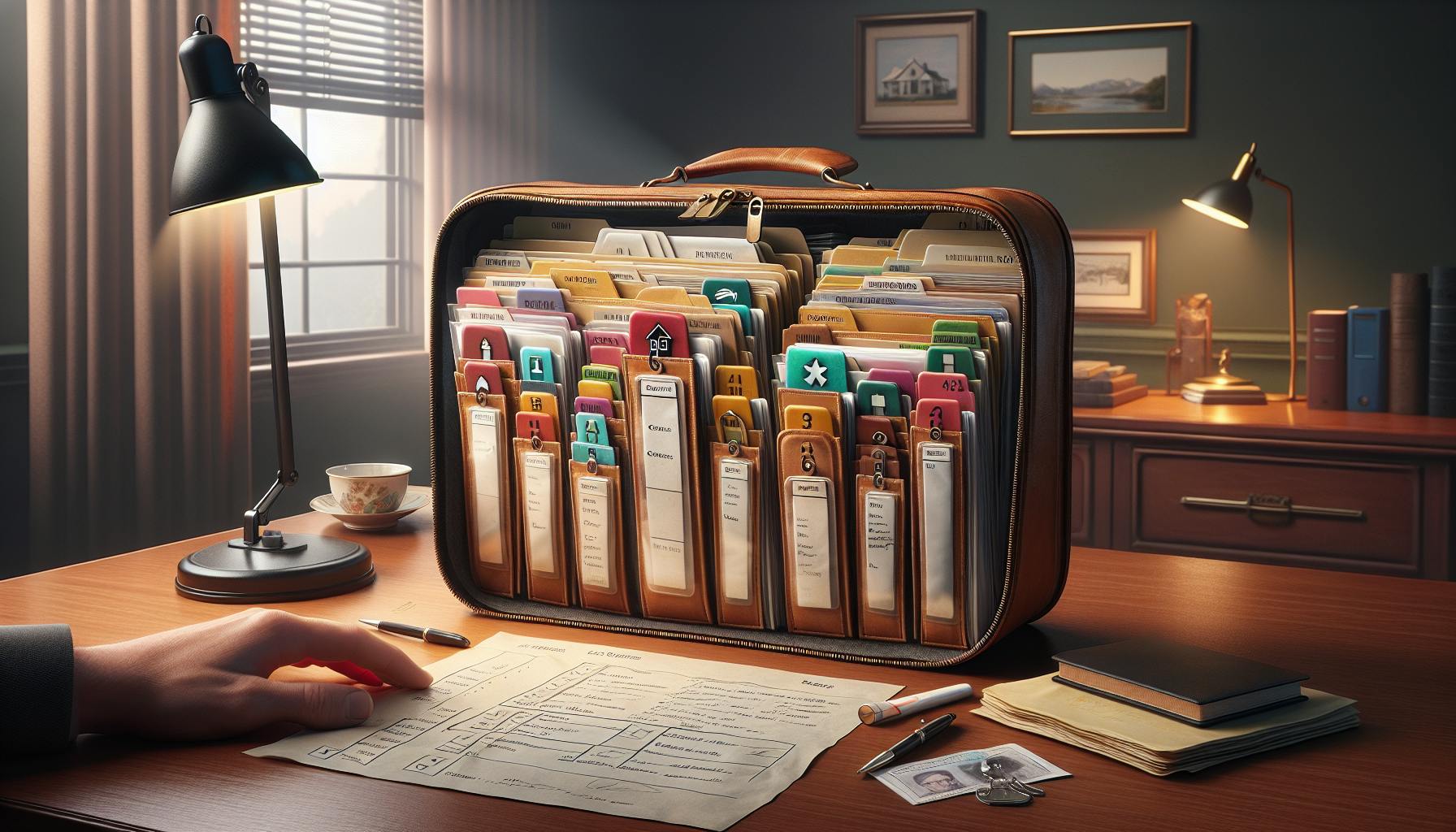When emergency strikes, having proper first aid supplies can make the difference between life and death.
This comprehensive guide details the essential medical items all preppers need to handle injuries and illnesses when professional care is unavailable.
You'll discover the key components of a well-stocked first aid kit, critical over-the-counter medications, advanced wound care supplies, diagnostic tools, and the medical knowledge vital for emergency scenarios.
Introduction to Prepper First Aid Essentials
This introductory section will provide an overview of the importance of having proper first aid supplies and knowledge when planning for emergency situations where professional medical care may be unavailable.
Defining the Prepper Lifestyle
The prepper community seeks self-reliance and preparedness through stockpiling necessary supplies and learning key skills to handle potential crises like natural disasters or societal disruptions. Preppers aim to be ready to handle injuries and illnesses without access to hospitals, doctors or first responders.
Overview of Essential Prepper First Aid Supplies
This article will provide a comprehensive list of highly recommended medical supplies and information to effectively treat injuries and illnesses when professional healthcare may be inaccessible for a period of time. Having the right first aid gear and training is an important aspect of emergency preparedness.
First Aid Kit Fundamentals
These basic yet critical items should serve as the foundation of any prepper's medical reserves. Having the right medical supplies and knowledge to handle injuries and illnesses when professional medical care is unavailable is vital for survival preparedness.
First Aid Essentials: Building Your Kit
A well-stocked first aid kit tailored to the most likely medical issues you may face should be a primary focus. Essential items include:
- Gauze pads and rolls, bandages - to control bleeding and wrap wounds
- Antiseptic ointments - to prevent infection in cuts and scrapes
- Medical tape, trauma shears - to secure dressings and cut away clothing
- Medications - antibiotics, pain relievers, antihistamines
- Tools - tweezers, thermometers, cold/hot packs
Customize your kit based on your family's needs, skill level, and likely risks. Have basic wound care supplies, medications for common health issues, and tools to assess and treat medical emergencies.
Over-the-Counter Medications for Health Issues Management
Having a supply of OTC medications can help manage minor illnesses and relieve symptoms when professional healthcare is limited. Useful items include:
- Pain relievers - ibuprofen, acetaminophen to reduce fever and discomfort
- Antihistamines - for allergies and reactions
- Antidiarrheals - for stomach issues
- Electrolyte replacements - to replenish fluids and minerals
Rotate stock to ensure expiration dates are current. Store properly to preserve effectiveness.
First Responder Equipment: Tools and Supplies
Equip yourself to assess and respond to medical emergencies with key supplies:
- Protective gear - gloves, masks, eyewear
- Diagnostic tools - blood pressure cuffs, stethoscopes
- Wound care - sutures, clotting agents, skin closures
- Splints and slings - to stabilize injuries
- Cleaning supplies - for sterilization and preventing infection
With training, these items can help provide vital emergency medical care and first aid when professional help is not available.
Having both knowledge and well-stocked reserves tailored to likely risks is key to medical preparedness. Customize your supplies to your situation and regularly refresh, replenish, and upgrade as needed.
Comprehensive Trauma Supplies
Having basic first aid supplies is important, but serious injuries may require more advanced treatment. Here are some key items to stockpile:
Advanced Wound Care and Closure Techniques
- Irrigation syringes to flush wounds
- Splints to stabilize injured limbs
- Sterile suture kits for wound closure
- Hemostatic agents to stop bleeding
- Butterfly closure strips for minor lacerations
Emergency Medications and Intravenous Supplies
- Prescription medications and antibiotics
- IV fluids, tubing, and cannulas
- Syringes, needles, and sharps container
- Requires medical training to utilize properly
Diagnostic Equipment for Emergency Medical Care
- Blood pressure cuffs to monitor vitals
- Stethoscopes to check breathing
- Otoscopes to examine ears, nose, and throat
- Thermometers to check for fevers
- Glucose monitors to test blood sugar
Having the right supplies and knowledge to handle medical emergencies can prove invaluable when professional care is not available. Continuing education and training is recommended for those stockpiling advanced trauma items.
sbb-itb-b932644
Prepper Medical Training and Knowledge
In an emergency scenario, supplies alone won't be enough - proper training and reference materials are essential.
Survival Medicine Courses: Becoming Your Own First Responder
Taking a formal survival medicine course can provide invaluable hands-on education in emergency medical skills. Programs offered by organizations like the Red Cross teach how to assess patients, stop bleeding, set fractures, provide CPR, and more. This emergency first aid training prepares you to potentially save lives when professional medical care is not available.
Consider enrolling in an in-person or online course covering topics like:
- Patient assessment and vital signs
- Bleeding control and wound care
- Splinting broken bones
- Treating burns, bites, stings
- Basic life support/CPR
Gaining these competencies will equip you to handle common medical issues effectively.
Stockpiling Medical Literature for Health Issue Resolution
In addition to supplies, stockpile authoritative medical references to help diagnose and address health problems. Useful resources include:
- Where There Is No Doctor: A classic manual for health workers with practical treatment advice.
- The Survival Medicine Handbook: Covers hundreds of medical issues with photos.
- Special Ops Medical Handbook: A pocket guide designed for tough situations.
Keep printed guides in your supplies and download digital copies. When faced with unfamiliar symptoms or conditions, consult the literature to identify the likely issue and appropriate response.
Practicing Emergency Treatment Techniques
Simply reading about emergency techniques is not enough - you need hands-on practice to acquire and sharpen skills. Consider regularly rehearsing:
- Stopping bleeding with tourniquets and wound packing
- Sterilizing equipment and properly cleaning wounds
- Setting splints and slings to stabilize injuries
- Administering CPR and other lifesaving protocols
Practice essential techniques until they become second nature. This will help ensure you can effectively apply them while remaining calm and focused during real emergency situations.
Repeating drills cements muscle memory and confidence in your ability to provide emergency care. It also surfaces areas needing improvement so you can continue honing abilities over time.
Optimizing Storage and Accessibility of Emergency Healthcare Items
To ensure preparedness, first aid reserves should be well-managed, consistently resupplied, and readily accessible.
Inventory Management: Keeping Your First Aid Kit Updated
Keeping an up-to-date inventory of your medical supplies and first aid kit is crucial for emergency preparedness. Here are some tips:
-
Designate a place in your home to store first aid supplies. A closet, basement storage area, or bug-out bag works well. Make sure it's locked and secure.
-
Take a full inventory every 6 months. Check expiration dates on medications, replace depleted items, and restock perishables like bandages and gauze.
-
Log what you use after emergencies or injuries so you know what needs replenishing in your inventory.
-
Have a master list of essential survival health supplies and check items off as you resupply. Prioritize trauma and wound care supplies.
-
Set reminders to replace batteries for medical devices, update prescriptions, and cycle out expired components.
Keeping an organized system for managing your first aid essentials ensures you have what's needed when health issues arise.
Proper Storage Solutions for Survival Health Supplies
Storing your emergency medical care reserves properly is vital to ensure supplies remain viable for use long-term.
-
Use waterproof storage bins, ammo cans, or survival caches to protect against moisture, pests, and temperature fluctuations.
-
Designate cool, dark spaces like basements and interior closets for storage when possible to preserve medications and perishables.
-
Lock away hazardous materials like rubbing alcohol, hydrogen peroxide, and prescription drugs for safety.
-
Label storage containers clearly with contents and expiration dates for quick identification later on.
Proper storage keeps your first responder equipment and medical supplies ready for emergencies when you need them most.
Strategic Organization for Efficient Emergency Response
Organization of supplies plays a key role in effective emergency wound care and treatment.
-
Group related items like bandages, antiseptics, trauma shears, and latex gloves together in kits.
-
Label kits and containers clearly based on intended use, like airway management, IV fluids, medication administration, etc.
-
Map out designated areas in your home or bug out location to use as triage and treatment spaces.
-
Place basic first aid kits in go-bags, vehicles, and areas prone to injury like kitchens and workshops.
Smart organization of your emergency healthcare items allows for efficient response when health issues arise in disasters.
Concluding Summary of Best Prepper Items for First Aid
Being prepared to effectively respond to medical issues without professional healthcare requires thoughtful accumulation and organization of supplies paired with extensive self-education on emergency treatment methods.
The Importance of First Aid Preparedness in Survival Scenarios
Having robust medical reserves and training may prove vitally important to saving lives in disasters when hospitals are unavailable. Being equipped and knowledgeable to treat injuries and illnesses can help sustain health when professional medical care is inaccessible. Key reasons why disaster preparedness planning must include first aid capabilities:
- Natural disasters like earthquakes, floods, and storms can damage healthcare infrastructure, preventing access to hospitals.
- Pandemics may overload healthcare systems, limiting availability of doctors and emergency rooms.
- Personal economic hardships, like job loss or medical debt, could lead to uninsured status with inability to afford healthcare visits.
- Acquiring skills to diagnose and treat basic wounds, infections, pain, and other common issues provides crucial self-reliance.
Making first aid preparedness a priority when prepping helps mitigate reliance on professional healthcare in unstable times. Lives could depend on having adequate medical supplies, training, and knowledge.
Continual Improvement of Prepper First Aid Capabilities
Leverage online resources and community groups to continue expanding your knowledge, skills and supplies beyond the basics outlined here. Consider taking first responder classes, watching tutorial videos, attending prepper meetups, and reading wilderness medical guides. Some recommendations:
- Enroll in a Stop the Bleed or CPR certification course to learn techniques from experts.
- Watch YouTube instructional videos on suturing wounds, setting bones, and administering IV fluids.
- Join community emergency response team (CERT) groups to collaborate with medical volunteers.
- Expand medical equipment reserves gradually over time as budget allows.
- Consistently refresh perishable medical supplies like medications nearing expiration.
- Download survival medical references like army field manuals for offline access.
Advancing first aid abilities via continuous education and upgraded gear improves readiness to handle more complex emergency health situations. Make incremental progress over time toward an expanding and comprehensive capacity to respond to medical crises confidently. The journey toward medical self-reliance is ongoing.


